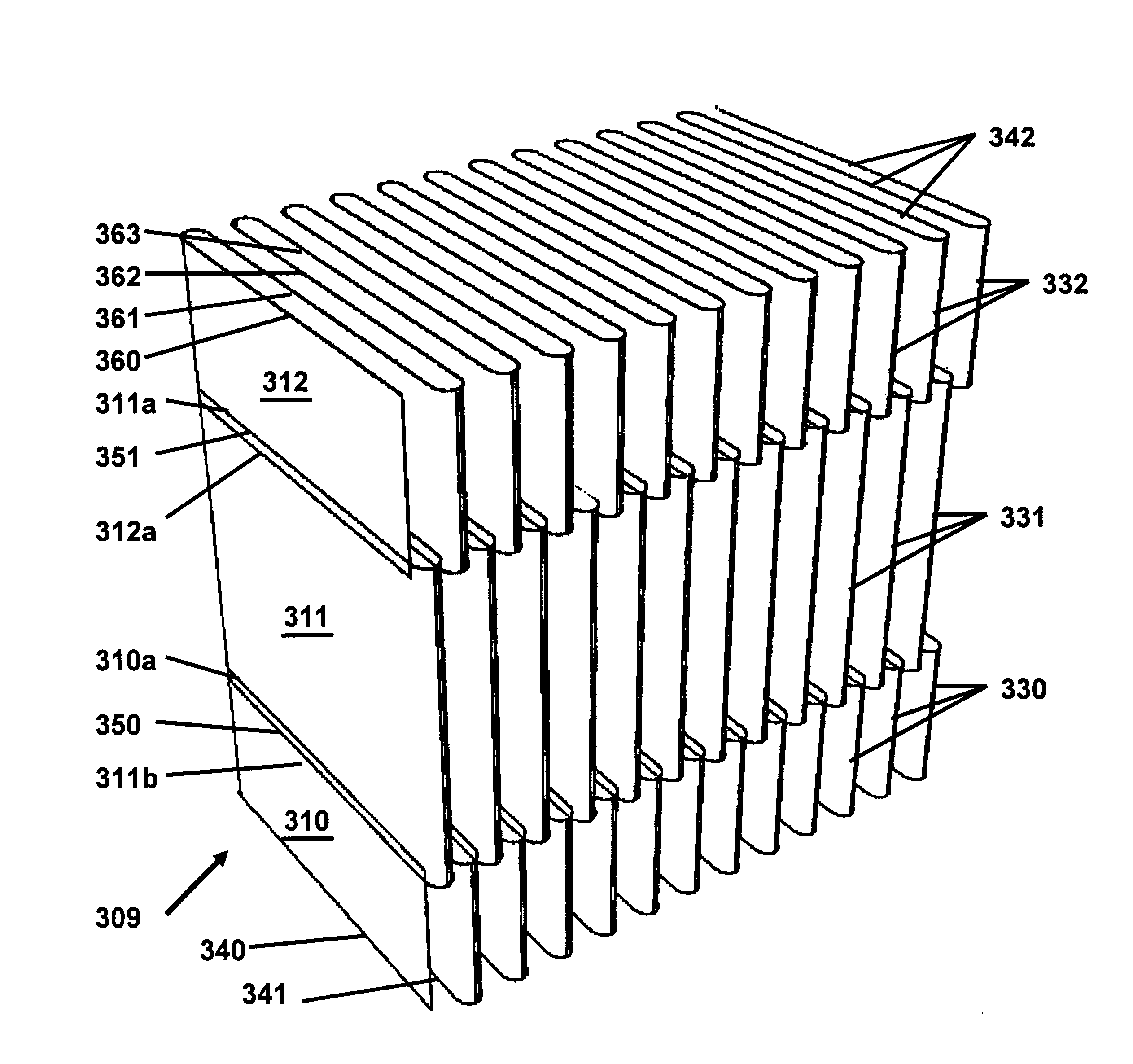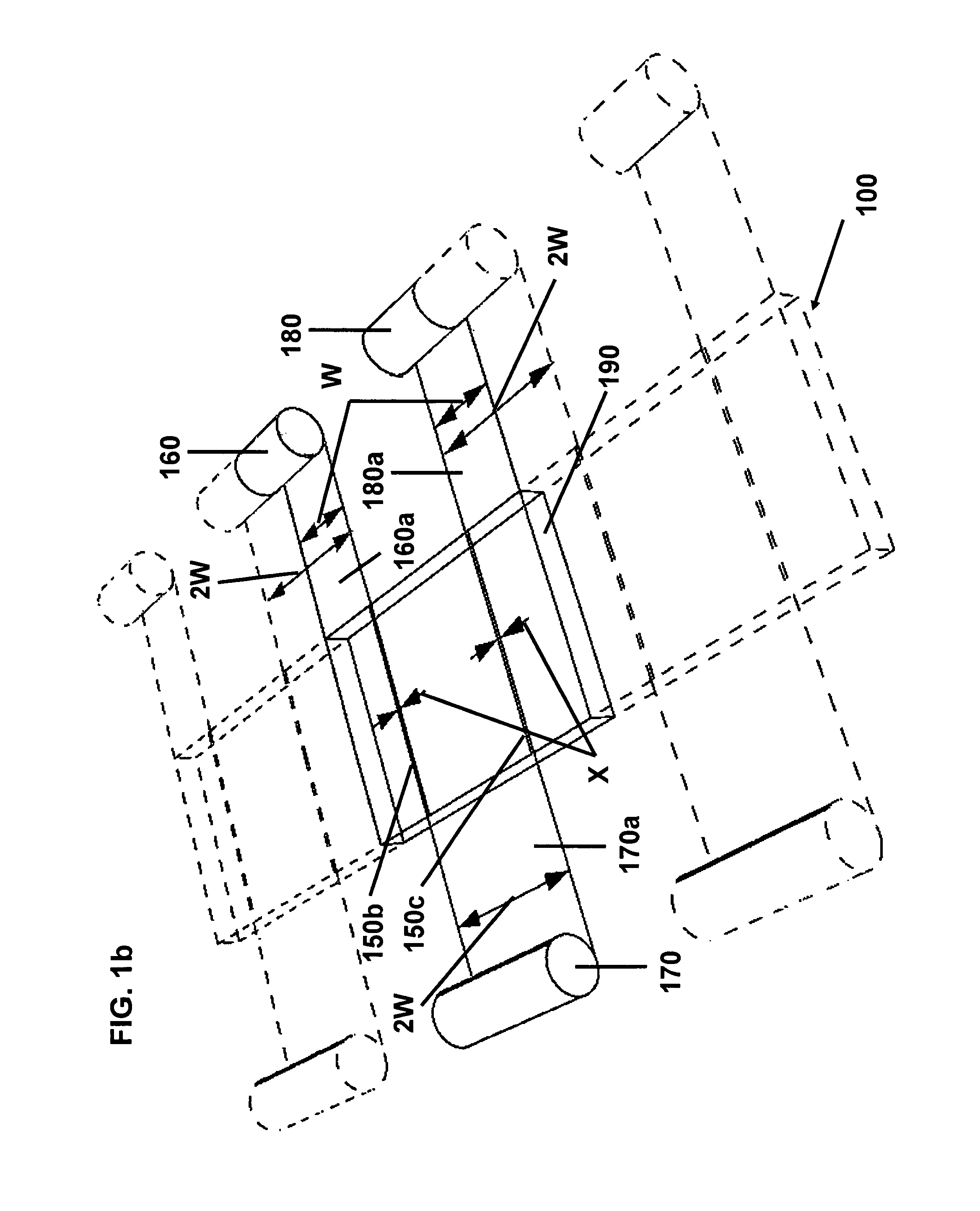Counter-flow membrane plate exchanger and method of making
a technology of counter-flow membrane and exchanger, which is applied in the direction of indirect heat exchangers, stationary plate conduit assemblies, lighting and heating apparatus, etc., can solve the problems of material waste during manufacturing, incompatibility of existing plate-type exchangers, and increased end-use costs of exchangers, so as to reduce construction time, improve the effect of sealing characteristics and superior results in pressurized crossover leakag
- Summary
- Abstract
- Description
- Claims
- Application Information
AI Technical Summary
Benefits of technology
Problems solved by technology
Method used
Image
Examples
Embodiment Construction
[0046]FIGS. 1a-b show simplified schematic diagrams illustrating a variety of starting positions and starting number of membrane strips that can be utilized to make a counter-pleated, counter-flow core 100. In FIG. 1a two strips of membrane 110a and 120a of width Z are drawn in substantially opposite directions from two reels of membrane, 110 and 120, respectively. Start of membrane 110a is produced by 90° angle cut 125. Start of membrane 120a is produced by 90° angle cut 126. Membrane strips 110a and 120a are arranged edge-to-edge in the same plane on the top surface of a base frame or platform 190. The resultant seam 150a forms an overlap of X distance. One strip of separator 130a is drawn at a 90° angle to strips 110a and 120a from reel of separator 130 of width Y. FIG. 1b illustrates a repeating pattern to start construction of a counter-pleated core 100. Three or more strips of membrane 160a, 170a, and 180a of width W or 2W are drawn in substantially opposite directions from tw...
PUM
| Property | Measurement | Unit |
|---|---|---|
| 90° angle | aaaaa | aaaaa |
| angles | aaaaa | aaaaa |
| thermal energy | aaaaa | aaaaa |
Abstract
Description
Claims
Application Information
 Login to View More
Login to View More - R&D
- Intellectual Property
- Life Sciences
- Materials
- Tech Scout
- Unparalleled Data Quality
- Higher Quality Content
- 60% Fewer Hallucinations
Browse by: Latest US Patents, China's latest patents, Technical Efficacy Thesaurus, Application Domain, Technology Topic, Popular Technical Reports.
© 2025 PatSnap. All rights reserved.Legal|Privacy policy|Modern Slavery Act Transparency Statement|Sitemap|About US| Contact US: help@patsnap.com



